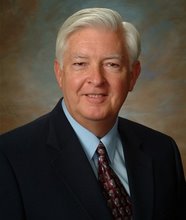In my last blog, I showed that there is no evidence supporting a time rate of increase in the velocity of recession for distant galactic clusters. Today, I will discuss an alternative theory for how the universe began WITHOUT a big bang. This theory was developed by Bobby McGehee, a retired physicist and amateur astronomer. He worked as an engineering physicist in the aerospace industry but throughout his career he had a passion for astronomy. The Big Bang theory bothered him deeply because it violated so many fundamental laws of physics. It did not explain the immense amount of angular momentum and how the universe could be younger than some white dwarf stars. Also, it requires the universe to begin in a singularity, expand at faster than light speed, and requires the discovery of Dark Energy to explain what theory proponents interpret as an accelerating rate of expansion. Over the years, Bobby developed a model that is a better fit to the data, explains the origin of the angular momentum, does not start at a singularity, is at least 30 billion years old, and explains how the universe is growing while corporal matter of the universe is decelerating with time.
I subscribe to the notion that everything developed from space and matter already existed and did not come from nothing out of a single point. The 1933 Nobel laureate, Paul Dirac, visualized the universe as an infinite sea of particles with negative energy. It was a mixture of electrons and holes. Later it was discovered that the holes were the anti-particle of the electron and led to the discovery of the positron which is approximately equal to the electron in mass.
It is agreed that by far most observed matter in the universe are hydrogen atoms. Several cosmologists have estimated that if the total matter (mass and energy), including dark matter, in the universe were distributed throughout all space as hydrogen atoms, its distribution would be about eight atoms per cubic meter. Estimates of total matter vary over a wide range of several factors therefore the primordial particle populations are referred to as 'about'. Generally it is agreed that dark matter is about 8 times more plentiful than what is conventionally observed.
One of the simplest atoms in the universe is known as positronium. Instead of an electron orbiting a proton, an electron orbits a positron about a common center. Under normal conditions, the atom is unstable and the electron and positron self-annihilate in less than a second. Usually two photons (gamma rays) are released traveling in opposite directions. It is the positronium atom that forms the basis of Bobby McGehee’s model.
In Bobby’s model there is a primordial universe that extends out to infinity. It consists of a three-dimensional “matrix” of stabilized positroniums. Each positronium is in a steady state at each vertex of an equilateral hexahedron. The spacing is stabilized by synchronized rotations and electrostatic attractions / repulsions. Hydrogen atoms are about 900 times the mass of positronium so,based on the generally agreed upon mass of the universe, the positroniums atoms are spaced at a separation of about five centimeters in all directions to infinity. This high degree of order represents the lowest level of entropy for the universe.
According to Bobby’s model, at some time about 30 billion years ago an instability occurred at one of the positroniums in our region of the primordial universe. Self-annihilation occurred. The two photons that were released began a chain reaction that continues today. The deflagration wave is racing at near light speed into the infinite primordial universe. The model does not exclude the possibility that other initiation sites may have occurred elsewhere at other times.
Within and behind the deflagration wave, transmutation of the photon energy results in the creation of corporal matter. This mass traveling at relativistic speeds agglomerates due to the enhanced gravitational attraction. As the particles grow in size, their collisions often occur off center, resulting in the conversion of linear momentum into angular momentum. As the bodies grow, more of the linear momentum continues to be converted into angular momentum and, just as in the potato truck analogy, the linear velocity away from the initiation site continues to decrease. The growth of the bodies continues until stars are borne. These in turn form into clusters of stars known as galaxies and these in turn into clusters of galaxies. Based on this model, one would expect to see galactic clusters decelerating with time.
Bobby McGehee has presented his theory in two books available on Amazon.
NEW UNIVERSE THEORY WITH THE LAWS OF PHYSICS
Model of the Universe
Sunday, August 7, 2011
Subscribe to:
Posts (Atom)
